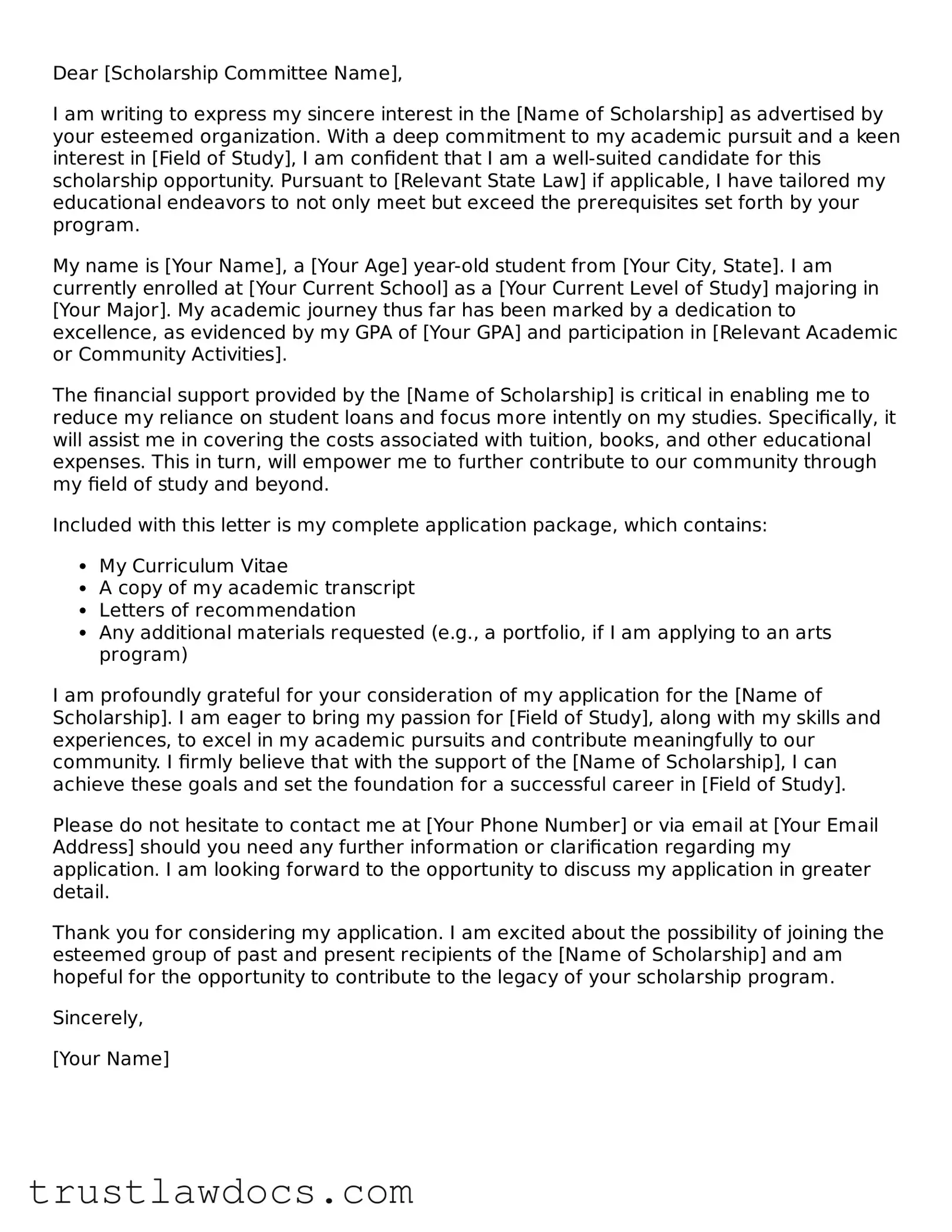The Statement of Purpose (SOP) is a document closely resembling the Letter of Intent For Scholarship. Both are written to convey the applicant's goals and motivations for seeking a particular opportunity. While the SOP is typically used for admissions to universities or graduate schools, detailing an applicant's academic and career background, the Letter of Intent focuses more on persuading a scholarship committee about why the applicant deserves the scholarship, often emphasizing financial need along with academic and personal achievements.
A Cover Letter for job applications shares common ground with the Letter of Intent For Scholarship, as both documents aim to introduce the applicant and highlight their qualifications and desire to be chosen, whether for a job position or a scholarship. However, the Cover Letter is tailored to match specific job requirements and demonstrate how the applicant's skills and experiences make them the ideal candidate for a position, whereas the Letter of Intent is more focused on academic accomplishments and aspirations.
The Grant Proposal Narrative resembles the Letter of Intent in its goal to secure funding, but it is directed toward funding projects or research rather than supporting individual academic pursuits. Both documents must persuasively present the case for why the funding request should be granted, emphasizing the significance and impact of the proposed work. The Grant Proposal Narrative, however, requires a detailed project plan, including objectives, methodology, a timeline, and a budget.
Personal Statements, often required for college or graduate school applications, are similar to Letters of Intent For Scholarship by offering the applicant a chance to present themselves beyond test scores and grades. Both documents provide insights into the applicant's personality, experiences, and goals. The key difference lies in the Personal Statement's broader approach to narrating the applicant's story and how it has shaped their academic and career ambitions.
Research Proposals, while primarily used in academic and professional settings to propose a specific research project, align with the intent of scholarship letters in outlining an individual's objectives and how they plan to achieve them. Both documents must be clear, concise, and persuasive, making a strong case for the feasibility and importance of their objectives. However, Research Proposals delve into technical details about methodology, literature review, and anticipated research outcomes.
The Business Plan is akin to a Letter of Intent For Scholarship when entrepreneurs seek investment. Both documents aim to persuade the reader of the value and viability of the proposed endeavor, be it educational advancement or a business venture. A Business Plan, however, is more comprehensive, detailing the business model, market analysis, operational strategies, and financial projections.
The Scholarship Application Letter, often confused with the Letter of Intent for Scholarship, serves a similar purpose of requesting financial support for academic endeavors. Both documents require the applicant to highlight their academic achievements, personal strengths, and the reasons they are seeking the scholarship. The distinction typically lies in the format and specifics of the requirements set by the scholarship provider, with some expecting more detailed personal narratives or specific information about the applicant’s circumstances.
The Motivation Letter for international study programs, like Erasmus, closely mirrors the Letter of Intent for Scholarship, as both aim to demonstrate the applicant’s enthusiasm, qualifications, and reasons for wanting to pursue a particular opportunity. The Motivation Letter, however, often focuses more on cultural exchange and personal growth opportunities inherent in studying abroad, explaining how the experience aligns with the student's academic and career goals.
Finally, the Funding Request Letter to personal or institutional donors shares the objective of securing financial support with the Letter of Intent For Scholarship. Both need to effectively communicate the purpose of the funding, the difference it will make, and why the requester is worthy of support. While the Funding Request Letter might target a broader range of projects or needs, from business startups to community projects, and not just academic scholarships, the core principles of clarity, persuasion, and direct appeal to the reader’s interests remain the same.
